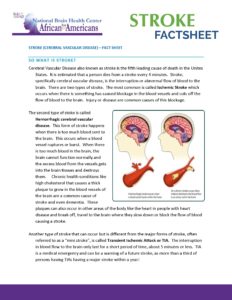So what is Stroke?
 Cerebral Vascular Disease also known as stroke is the fifth leading cause of death in the Unites States. It is estimated that a person dies from a stroke every 4 minutes. Stroke, specifically cerebral vascular disease, is the interruption or abnormal flow of blood to the brain. There are two types of stroke. The most common is called Ischemic Stroke which occurs when there is something has caused blockage in the blood vessels and cuts off the flow of blood to the brain. Injury or disease are common causes of this blockage.
Cerebral Vascular Disease also known as stroke is the fifth leading cause of death in the Unites States. It is estimated that a person dies from a stroke every 4 minutes. Stroke, specifically cerebral vascular disease, is the interruption or abnormal flow of blood to the brain. There are two types of stroke. The most common is called Ischemic Stroke which occurs when there is something has caused blockage in the blood vessels and cuts off the flow of blood to the brain. Injury or disease are common causes of this blockage.
The second type of stoke is called Hemorrhagic cerebral vascular disease. This form of stroke happens when there is too much blood sent to the brain. This occurs when a blood vessel ruptures or burst. When there is too much blood in the brain, the brain cannot function normally and the excess blood from the vessels gets into the brain tissues and destroys them. Chronic health conditions like high cholesterol that causes a thick plaque to grow in the blood vessels of the brain are a common cause of stroke and even dementia. These plaques can also occur in other areas of the body like the heart in people with heart disease and break off, travel to the brain where they slow down or block the flow of blood causing a stroke.
Another type of stroke that can occur but is different from the major forms of stroke, often referred to as a “mini stroke”, is called Transient Ischemic Attack or TIA. The interruption in blood flow to the brain only last for a short period of time, about 5 minutes or less. TIA is a medical emergency and can be a warning of a future stroke, as more than a third of persons having TIAs having a major stroke within a year!
Am I At Risk?
Strokes can occur at any age and sometimes without warning. The chance of having a stroke increases based on certain risk that be related to any of these three categories: other health conditions, lifestyle behaviors, and family history or other uncontrollable factors like age and gender.
Regarding less of your risk it is important to:
- Understand what your risk are
- Know your family history
- See your doctor and talk about your risk and how to reduce them
Stroke in the African-American Community:
Across most chronic diseases, African-Americans are disproportionately impacted and affected. This is also the case when it comes to stroke. Minority communities, especially the African-American population already have higher rates of disease like diabetes and heart disease both of which increase your risk for stroke. According the CDC, African-American males are twice as like to have a stroke in their lifetime compared to white men and are 60% more likely to die from a stroke!
KNow the signs of a stoke
It is important to know and recognize the signs of a stroke. Prompt and immediate medical plays a major role in saving the life of a person who is having a stroke. Symptoms can sometimes vary depending on the type of stroke, but all strokes cause problems with normal brain functions. Commons signs of a stroke are:
- Decrease or loss of vision
- Impaired speech or slurring of your words
- Being unable to move or use one side of your body
- Generalize weakness in your arms and/or legs
Other symptoms related to hemorrhagic strokes also include headaches, nausea, vomiting, and increased tiredness or a loss of energy.
If you have these symptoms or see them in a loved one you need to call 911 or seek immediate medical attention.
How Do I Prevent A Stroke?
Some of the best ways to produce stroke are by changing what we do and what we eat to develop and maintain a healthier lifestyle. A healthy lifestyle includes the following:
- Eating a healthy diet.
- Maintaining a healthy weight.
- Getting enough exercise.
- Not smoking.
- Limiting alcohol use.
To Have a Healthy Diet Try:
Choosing healthy meal and snack options can help you avoid stroke and its complications. Be sure to eat plenty of fresh fruits and vegetables.
Eating foods low in saturated fats, trans fat, and cholesterol and high in fiber can help prevent high cholesterol. Limiting salt or (sodium) in your diet also can lower your blood pressure.
Maintain a Healthy Weight
Being overweight or obese increases your risk for stroke. To determine whether your weight is in a healthy range, doctors often calculate your body mass index (BMI).
Be More Physical Activity
Physical activity can help you maintain a healthy weight and lower your cholesterol and blood pressure levels. For adults, the Surgeon General recommends 2 hours and 30 minutes of moderate-intensity exercise, like brisk walking or bicycling, every week. Children and adolescents should get 1 hour of physical activity every day.
No Smoking
Cigarette smoking greatly increases your risk for stroke. If you don’t smoke, don’t start. If you do smoke, quitting will lower your risk for stroke. Your doctor can suggest ways to help you quit.
Limited Alcohol
Avoid drinking too much alcohol, which can raise your blood pressure. Men should have no more than 2 drinks per day, and women only 1.
